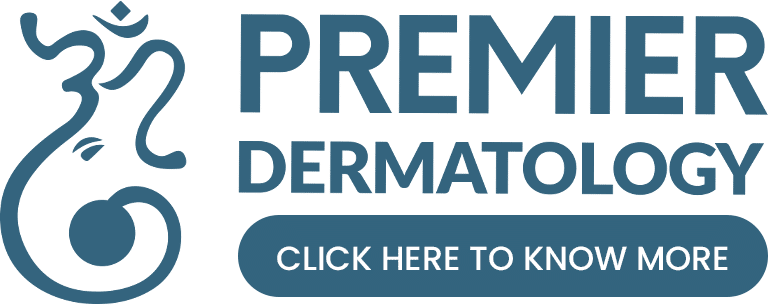Understanding Lower Back Pain After a Car Accident
Definition and Causes of Lower Back Pain
When you experience lower back pain after a car accident, it refers to discomfort located in the lumbar region. This type of pain can arise from various causes, including muscle strain, soft tissue injuries, or spinal trauma. Whiplash, a common result of collisions, often affects the lower back. The sudden jolt from a crash can lead to lumbar sprains, bulging disks, or spinal misalignment. Recognizing the nature of your pain is crucial for addressing the underlying cause effectively.
Statistics and Symptoms of Lower Back Injuries
Statistics show that lower back injuries are among the most reported in car accidents. Such injuries account for a significant number of emergency visits following vehicular incidents. You must be aware of symptoms that may not appear immediately post-accident. Symptoms can include sharp pain, numbness, or tingling down the legs. It’s essential to monitor for these signs, as they may indicate nerve damage or herniated disks requiring urgent medical attention.
Recognizing Acute vs. Chronic Pain
Understanding the difference between acute and chronic lower back pain from car crashes is vital. Acute pain develops soon after the accident and may last a few days to weeks. In contrast, chronic pain persists beyond three months and could indicate more severe underlying issues, like spinal stenosis or facet joint injuries. If you notice enduring discomfort, it’s imperative to consult a healthcare provider. Early diagnosis can prevent long-term complications.
Underlying Conditions from Car Accidents
Lower back pain from a car crash might signal underlying conditions that need professional evaluation. Lumbar fractures, disc herniation, or nerve impingement are possible consequences of severe accidents. These conditions not only cause significant pain but may also limit mobility or lead to chronic issues. Identifying these problems promptly ensures appropriate treatment, reducing the risk of lasting damage to your back.
Symptoms to Monitor Following a Car Accident
Common Symptoms of Lower Back Pain Post-Accident
After a car accident, you might experience lower back pain that radiates to other body parts. This is often a sign of underlying issues. Stiffness in the lower back is another common symptom. It can limit your movements, making it hard to perform daily tasks. These symptoms might occur immediately or develop over time. Immediate attention is crucial as it helps in better diagnosis and treatment.
Recognizing Serious Signs and Tracking Pain
Not all pain is muscle strain. If you notice changes in sensation, like tingling or numbness, it could indicate nerve involvement. Pain intensity can signal different injury levels. Sharp or intense pain often suggests severe injuries like fractures or herniated disks. Start a pain journal. Track your symptoms daily. Note changes in pain intensity, location, and any related symptoms. This information is vital for your healthcare provider to identify the best treatment strategy.
When to Seek Medical Attention
Timeframe and Urgency for Medical Evaluation
When you experience lower back pain from a car crash, seeking medical evaluation in a timely manner is vital. Ideally, visit a healthcare professional within 24 to 48 hours of the accident. This helps in identifying injuries that might not be immediately apparent due to adrenaline masking pain. If your pain persists or intensifies over a few days, it becomes crucial to consult a doctor.
Indicators that necessitate immediate medical care include severe pain that limits mobility, loss of sensation in the legs, or any bowel or bladder dysfunction. Experiencing intense headaches or dizziness also warrants prompt attention. Early evaluation aids in documenting injuries, which is essential for legal and insurance purposes.
Role of Medical Professionals and Preparation
Medical professionals play a critical role in diagnosing and treating lower back pain after car accident. They conduct clinical assessments, imaging studies, and review your medical history to pinpoint the cause of pain. This accurate diagnosis determines the appropriate treatment path, be it physical therapy, medications, or surgery.
Preparing for a doctor’s visit involves accurately reporting symptoms, even if they seem minor. Note the duration and intensity of your pain. Mention any movement that exacerbates the pain. Bringing a list of questions and concerns can help you maximize your consultation. This comprehensive communication ensures you get the best care possible, helping you recover efficiently from your injuries.
Potential Treatments for Lower Back Pain
Non-Invasive Treatment Options
When you experience lower back pain from car crash, non-invasive treatments often come first. Physical therapy is common. It involves exercises to improve strength and flexibility. Therapists design programs tailored to your condition. Over-the-counter medications, like ibuprofen, help reduce pain and inflammation. It’s crucial to follow a healthcare professional’s advice for effective results.
For further relief, consider alternative therapies. Acupuncture can alleviate lower back pain after car accident. It involves inserting thin needles into specific body points. Chiropractic care offers another non-invasive option. Chiropractors adjust your spine to improve function and reduce pain. These therapies may complement conventional treatments.
Imaging and Surgical Interventions
If pain persists or worsens, imaging tests like X-rays or MRIs become vital. They help identify underlying issues, such as herniated disks or fractures. Early diagnosis ensures appropriate interventions are planned.
In severe cases, surgical intervention might be necessary. Procedures like spinal fusion or discectomy address significant damage. Surgery typically aims to alleviate pain and restore function. Post-surgery, personalized rehabilitation plans are crucial. They help you regain mobility and strength. This part of recovery is as vital as the surgery itself. Specialists will guide you through exercises fitting your specific needs.
Preventive Measures and Self-Care Strategies
Importance of Posture and Ergonomics
Maintaining proper posture after an accident is crucial. Good posture helps align your spine. It reduces strain on your back. Consider ergonomic adjustments at work. Use a chair with lumbar support. Adjust your computer screen to eye level. These changes can help prevent further lower back pain from car crash.
Exercises and Lifestyle Changes
Engage in simple exercises to strengthen your lower back. Gentle stretches improve flexibility. Strengthening exercises can stabilize your spine. Yoga and pilates are effective. These activities promote core strength. They also enhance overall posture.
Lifestyle changes can aid in recovery. Maintain a healthy weight. Excess weight strains your lower back. Eat a balanced diet. This supports overall health and healing. Quit smoking to improve circulation. Better circulation aids in tissue repair.
Pain Management and Support Systems
At home, manage pain with heat or ice therapy. Use a heating pad or warm cloth. This can relax tense muscles. Ice packs can reduce swelling. This helps alleviate acute pain. Over-the-counter pain relievers may also help.
Support systems are vital for recovery. Family can assist with daily tasks. Friends can provide emotional support. They encourage you to follow medical advice. Joining support groups can be beneficial. Sharing experiences with others aids in coping with lower back pain after car accident.
What is lower back pain after a car accident?
Lower back pain after a car accident refers to discomfort located in the lumbar region, which can arise from various causes, including muscle strain, soft tissue injuries, or spinal trauma.
What are the common causes of lower back pain following a car accident?
Common causes include muscle strain, whiplash, lumbar sprains, bulging disks, and spinal misalignment due to the sudden jolt from a crash.
What are the typical symptoms of lower back injuries after a car accident?
Symptoms can include sharp pain, numbness or tingling down the legs, and stiffness in the lower back. These symptoms may not appear immediately and can indicate nerve damage or herniated disks.
How can I differentiate between acute and chronic lower back pain?
Acute pain develops soon after the accident and lasts a few days to weeks, while chronic pain persists beyond three months and could indicate more severe underlying issues.
What underlying conditions could cause lower back pain from a car accident?
Possible underlying conditions include lumbar fractures, disc herniation, and nerve impingement, which can limit mobility and lead to chronic issues.
What should I do if I experience lower back pain after a car accident?
It is crucial to seek medical evaluation within 24 to 48 hours of the accident, especially if pain persists or intensifies, to identify any injuries that may not be immediately apparent.
What symptoms indicate the need for immediate medical care?
Indicators include severe pain that limits mobility, loss of sensation in the legs, bowel or bladder dysfunction, intense headaches, or dizziness.
What role do medical professionals play in treating lower back pain after an accident?
Medical professionals conduct assessments, imaging studies, and review your medical history to pinpoint the cause of pain and determine the appropriate treatment path.
How can I prepare for a doctor’s visit regarding my lower back pain?
Prepare by accurately reporting symptoms, noting the duration and intensity of pain, and bringing a list of questions and concerns to maximize your consultation.
What are the non-invasive treatment options for lower back pain?
Common non-invasive treatments include physical therapy, over-the-counter medications, acupuncture, and chiropractic care.
When are imaging tests necessary for lower back pain?
Imaging tests like X-rays or MRIs are vital if pain persists or worsens, as they help identify underlying issues such as herniated disks or fractures.
What surgical interventions might be required for severe lower back pain?
In severe cases, surgical procedures like spinal fusion or discectomy may be necessary to address significant damage and alleviate pain.
How does posture and ergonomics affect lower back pain recovery?
Maintaining proper posture and making ergonomic adjustments at work can help align your spine and reduce strain on your back.
What exercises can help strengthen my lower back?
Engaging in gentle stretches, strengthening exercises, yoga, and pilates can improve flexibility and promote core strength, which aids in recovery.
What lifestyle changes can support recovery from lower back pain?
Maintaining a healthy weight, eating a balanced diet, and quitting smoking can improve overall health and enhance healing.
How can I manage pain at home?
Pain can be managed with heat or ice therapy, using heating pads or ice packs, and taking over-the-counter pain relievers as needed.
What role do support systems play in recovering from lower back pain?
Support from family and friends is vital for daily tasks and emotional encouragement, while joining support groups can help in coping with lower back pain experiences.


